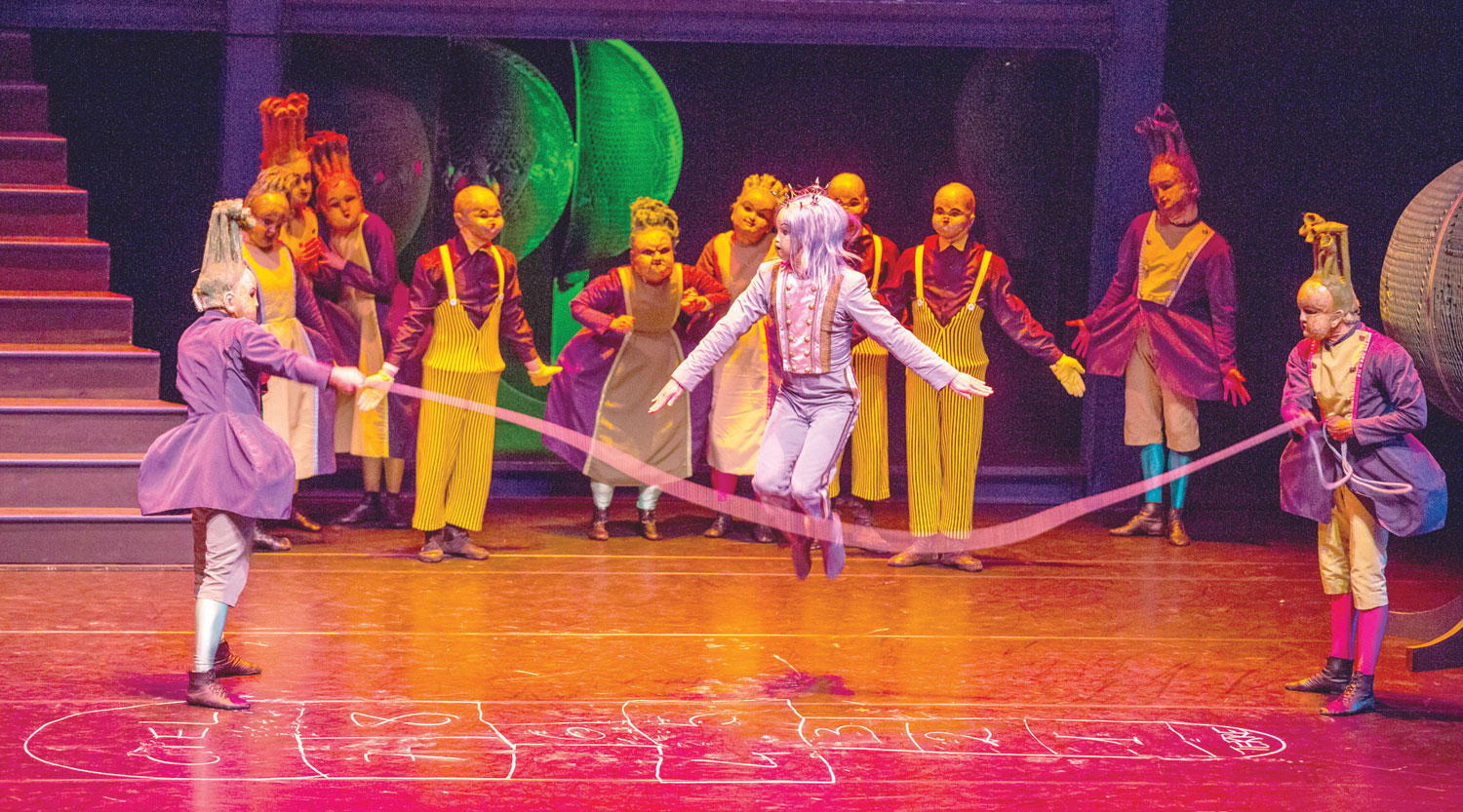


The fairy tale story ‘Cinderella’ was given an unusual twist by the Ballet de l’Opera de Lyon last weekend in three 90-minute performances at Royal Opera House Muscat. Set in a huge doll’s house, the dancers wore papier-mache masks designed by Monique Luyton representing dolls’ faces, and strangely exaggerated costumes with foam padding or wired skirts.
This stylised form necessarily demanded huge gestures from the performers as their facial expressions were invisible, and subtle movement would have been lost under their distorting clothes. The production was the brain-child of French choreographer extraordinaire, Maguy Marin, whose avant-garde idea began in Lyon in 1985 and has toured international stages ever since. Known for her subversive choreographic works, Marin explains her use of masks as denying the ego, the individuality of the dancer.
The story of Cinderella is widely known since its Ancient Egyptian origin. The music by Sergei Prokovief less so. It was composed during World War II and is a superb, mature score by the creator of ‘Peter and the Wolf’, soon to be heard at ROHM. It was performed by Muscat’s favourite orchestra, the PKF — Prague Philharmonia — under the 35-year-old, multiple award-winning Russian Maestro of Opera, Ballets and Symphonies, Konstantin Chudovsky. The music, completed in 1944, is evocative, rhythmic and compelling. Sometimes it is angular and wooden, like the clumsy movements of the dancing dolls, sometimes it is lyrical and romantic, reflecting the love between Cinderella and her Prince Charming, reminiscent of Prokovief’s ballet score for ‘Romeo and Juliet’.
The score was slightly shortened in this production, however. The orchestra was interrupted at first by robot-like electronic music, and later babbling, babish cries and gurgles from pre-recorded sound sequences prepared by Jean Schwartz. The effect certainly added to the surreal, innovative re-working of the story, but it was perhaps the most alarming, unnerving element in an otherwise successful interpretation.
Wim Wenders’ collaborator, Set and Costume designer, Montserrat Casanova, transposed the tale of ‘Cendrillon’ to a world of toys where naive-looking dolls are cruel in their behaviour as they come to life. There is still a type of fairy-godmother with magic powers, a Prince Charming, a lost slipper and a clock which strikes its threatening clang at midnight, but the result was a dream-like, stylised pantomime.

The show opened to reveal the Doll’s House behind a gauze curtain and Cinderella hunched beside a huge Aga cooker with a broom taller than herself. She is slight, with platinum blonde hair and moves like a wooden toy brought to life. In Marin’s production Cinderella is on stage for most of the performance, always bathed in a pool of white light, credit to lighting designer, John Spradbery, and was played brilliantly by South African dancer, Caelyn Knight.
In contrast the stepsisters are padded, with ridiculous hair, angular — and ugly — danced with appropriate loathsomeness by Dorothee Delabie and Coralie Levieux. Graziella Lorriaux danced Stepmother’s lewd gestures and vile caricature with perfect posture. Father, danced by the expressive Edi Blloshmi, is handsome and kind to Cinders, and brings her an enormous trunk for a gift. It contains a rag doll which in turn provides the vehicle for her fairy-godmother to transform into an illuminated Robot-Knight, played convincingly throughout by female dancer, Noellie Conjeaud.
With the help of three ballerinas, Fairy-Robot dresses Cinderella and teaches her to dance, and with a stroke of genius, she heads for the ball in a Noddy Car, accompanied by 4 cat-chauffeurs and 3 mice-valets.

Act 2 ‘at the ball’ was radically choreographed with meticulous timing to great comedic effect. The Prince was without padding or distortion, dressed in a blue costume with long, boyish blue hair. He wore a flashing-lights crown to emphasise his royal status, and the love duets with Cinderella were palpably tender and touching. The grossness of the step-family’s agitation and squabbling, accompanied by the pre-recorded sounds of baby dolls, was pitted against the purity and goodness of Cinderella’s character and her almost classical ‘pas de deux’ with the Blue Prince.
Act 3, ‘the search for the owner of the slipper’, featured an Andalusian beauty who tried to seduce the Prince with realistic Flamenco, danced to perfection by Jacqueline Baby, but of course she doesn’t fit the shoe. Between scenes he galloped through the illuminated Van Gogh-inspired countryside on a toy rocking horse, situated in the attic of the Dolls House — a clever montage effect. He meets a seductive Egyptian belly-dancer, a brilliant cameo danced by the diminutive Emiko Flanagan, literally served up on a plate.
Back home the step-trio were even more grotesque in their cruelty and sadistic behaviour towards the love-sick Cinderella. When the Prince called at the house with the tiny red slipper, stepmother hid her by sitting on her squashed-up, bent-over figure.
The show concluded with a nice touch; father tied up the evil trio with rope while Cinders and the Prince are married by the Robot-Knight’s magic sword. Toys of another age were pulled across the stage by the characters — and it appeared that the Happy Couple would be blessed with lots and lots of children!
Georgina Benison
(Pictures by Khalid al Busaidi, ROHM)
Oman Observer is now on the WhatsApp channel. Click here



